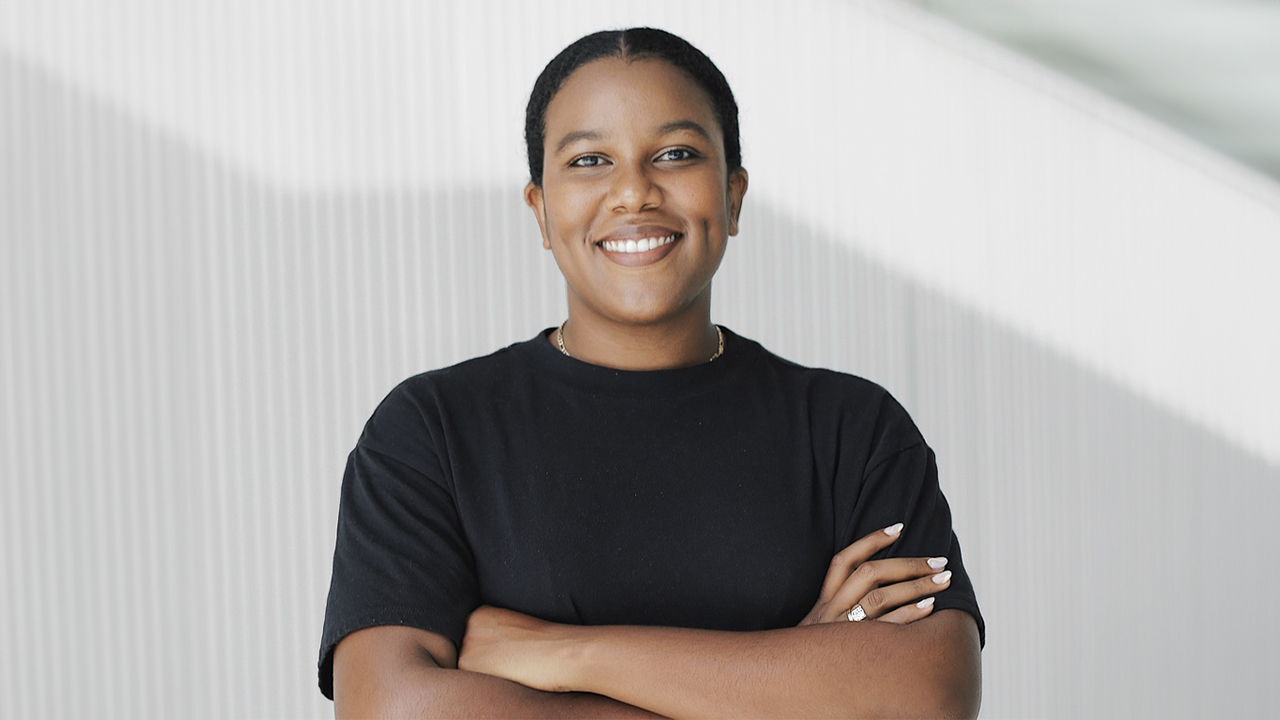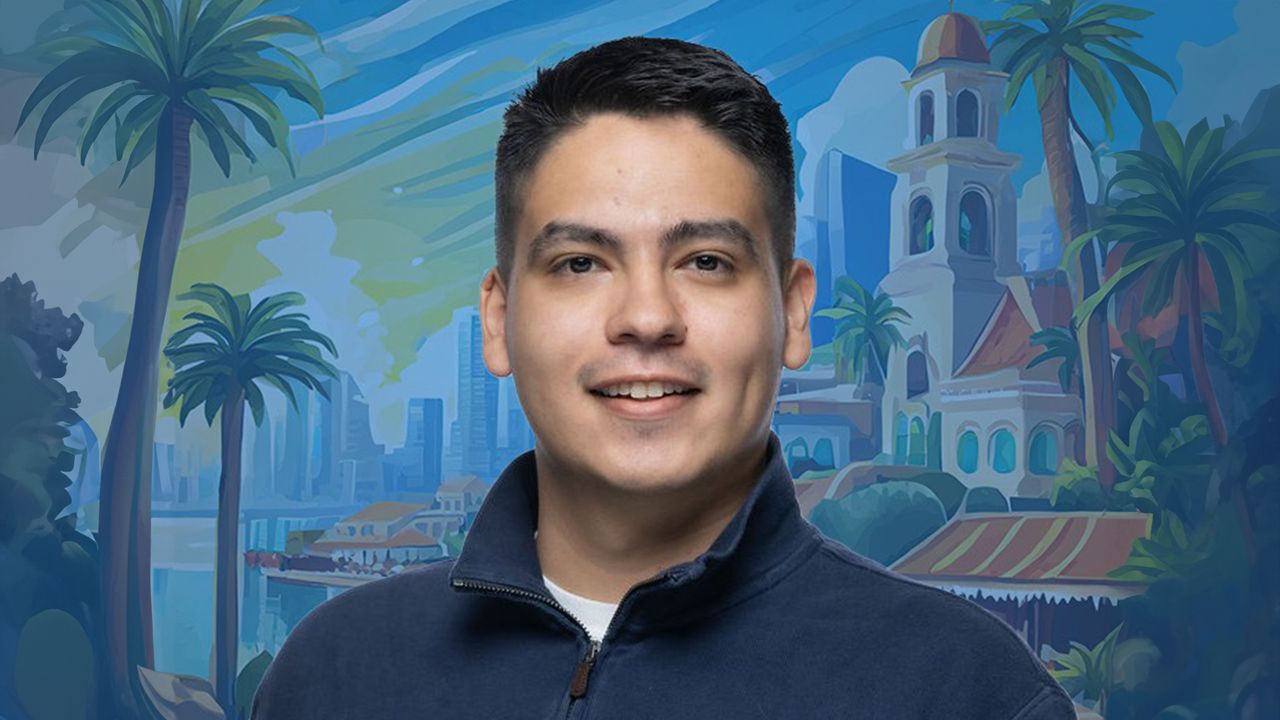
Every summer, Adobe Research welcomes graduate students in the GEM Fellowship program to join us in cutting-edge research and to experience life in an industrial research lab. Adobe has worked with GEM Fellows through the National GEM Consortium since 2012, helping provide talented STEM students from underrepresented communities with internships and financial support for their graduate work.
Over the years, Senior Research Scientist Ryan Rossi has mentored several GEM Fellows at Adobe Research, working closely with them to shape their summer internship research projects and prepare them to share their findings with the larger community.
“Many GEM interns come to us without ever having done research,” says Rossi. “I very much enjoy introducing them to research and helping them publish their first paper and patent. I find it rewarding to see many of them go on to a PhD and become very successful researchers.”
While some GEM Fellows are just starting their graduate programs and their careers, others join the program as part of a career pivot. We checked in with a few of this summer’s career changers to find out what inspired them to head back to school, what they worked on this summer, and where they hope to go next. We have spotlighted their stories below. In a companion blog post, you can read interviews with other GEM Fellows who interned with us as they launched their graduate school careers.
Chelsi Cocking explored the creative side of coding

Before heading back to graduate school]to pursue her master’s at the MIT Media Lab and now her PhD program at Georgia Tech, Chelsi Cocking was a full-time product designer in the tech industry. In grad school, she’s engaging with code as a medium for craft in the creation of art and design.
What did you work on this summer?
Chelsi: This summer, I was creating a generative collaging tool inspired by the works of collage artists, like David Hockney, who use photomontages to make a single scene from multiple images.
I’m coding this collaging tool by hand using openFrameworks, an open-source C++ library for creative coding. And I’m exploring different generative algorithms that divide space into visual forms, and various image processing techniques. I’m at the very early prototype stage, so I’m looking forward to iterating the tool.
I also had the opportunity to experiment with Project Primrose, making animations for the Primrose canvas and creating speculative design sketches around potential future uses of the technology.
What was it like working with your Adobe Research mentors?
Chelsi: My mentor this summer was Principal Scientist Aaron Hertzmann. I was happy to have a mentor who’s passionate about art and computing and exploring this sometimes weird and experimental intersection, and who sees the value of code as an artistic medium.
I also adopted Principal Scientist Stephen DiVerdi as a second mentor. And I was able to work with Senior Research Scientist/Engineer TJ Rhodes, who trusted me to experiment with the software and hardware for Project Primrose.
Can you share something valuable you learned during your time with Adobe Research?
Chelsi: I found my own two feet, and my confidence, as a technologist, researcher, and artist. To be given the trust, independence, and creative freedom to develop and drive my own project ideas, explore them, iterate on them, and build my own tooling and prototypes to execute them has been very empowering. It was a confirmation that I am more than capable of doing this.
What do you hope to do after graduate school?
Chelsi: I hope to work for a research organization in the tech industry, or a technology-based creative studio whose driving force is to advance and innovate human creativity and give us new means to create and express ourselves. I also want to build my own new media art practice and studio.
Claudia Osorio researched new ways of editing video on a mobile platform

Claudia Osorio began her career as a software engineer, and then decided to pivot by way of a master’s degree in computer science from the University of Southern California. Before launching into grad school this fall, she spent the summer collaborating with Adobe Researchers.
How did you get interested in a GEM Fellowship?
Claudia: During my undergraduate studies, I’d heard about the GEM Fellowship from friends. I was intrigued by the possibility of a company sponsor that I could spend up to two summers working with. I’d been focused on platform engineering, but I wanted to begin leveraging my engineering abilities to help artists during the creative process. I found an amazing fit for my future career aspirations: Adobe. I knew I couldn’t pass up the opportunity.
What did you work on this summer?
Claudia: This was my first time working in research! I collaborated with my mentors, Senior Research Scientist Cuong Nguyen and Senior Research Scientist Zeyu Jin, on a new research project exploring a voice-based copilot experience for video editing.
Can you tell us one valuable thing you learned this summer?
Claudia: I learned about the value of adaptability. When we first began this exploration, we had a different end goal than what we ended up implementing. We had the opportunity to run small user studies and speak with product partners to nail down what would truly benefit our end users. Embracing the change allowed us to develop a feature that genuinely excites people.
Reuben Luera used data to try to understand what users really want

Reuben Leura enjoyed being a professional UX designer, but when he realized he was much more interested in research, he decided to head to graduate school. Reuben will be pursuing a graduate degree in Human-Computer Interaction. But first, he spent a summer learning about user needs with Adobe Research.
What did you work on this summer?
I surveyed hundreds of people to gather data that would help us understand whether our customers prefer to get information as text, a chart, or a graph. That way we can infer people’s preferences without having to ask them explicitly. We also folded in questions that helped understand the user
characteristics, and we discovered some interesting things—for example, people with a lot of experience in data analytics prefer graphs while people with less experience prefer charts.
How did you develop your project idea?
At the beginning of the summer, I worked with my mentor, Senior Research Scientist Ryan Rossi, and he talked to me about my interests. He has a background in AI and Large Language Models, and he understood my interest in designing things to match users’ interests. That’s how we came to this project.
Can you share one of your favorite things about doing a GEM Fellowship with Adobe Research?
It’s awesome that GEM helped me get an internship before I even started my master’s program, and I’m getting real-world experience I never would have had otherwise. At Adobe Research, I felt very appreciated as an intern, especially because I could see how my project was going to have a real impact.
Considering a GEM Fellowship?
Adobe is excited to welcome GEM Fellows again next summer. If you’re interested, visit the GEM Fellowship Program website to learn more and apply by November 8.
Learn about more of the GEM Fellows who interned with Adobe Research this summer here!
Wondering what else is happening inside Adobe Research? Check out our latest news here.